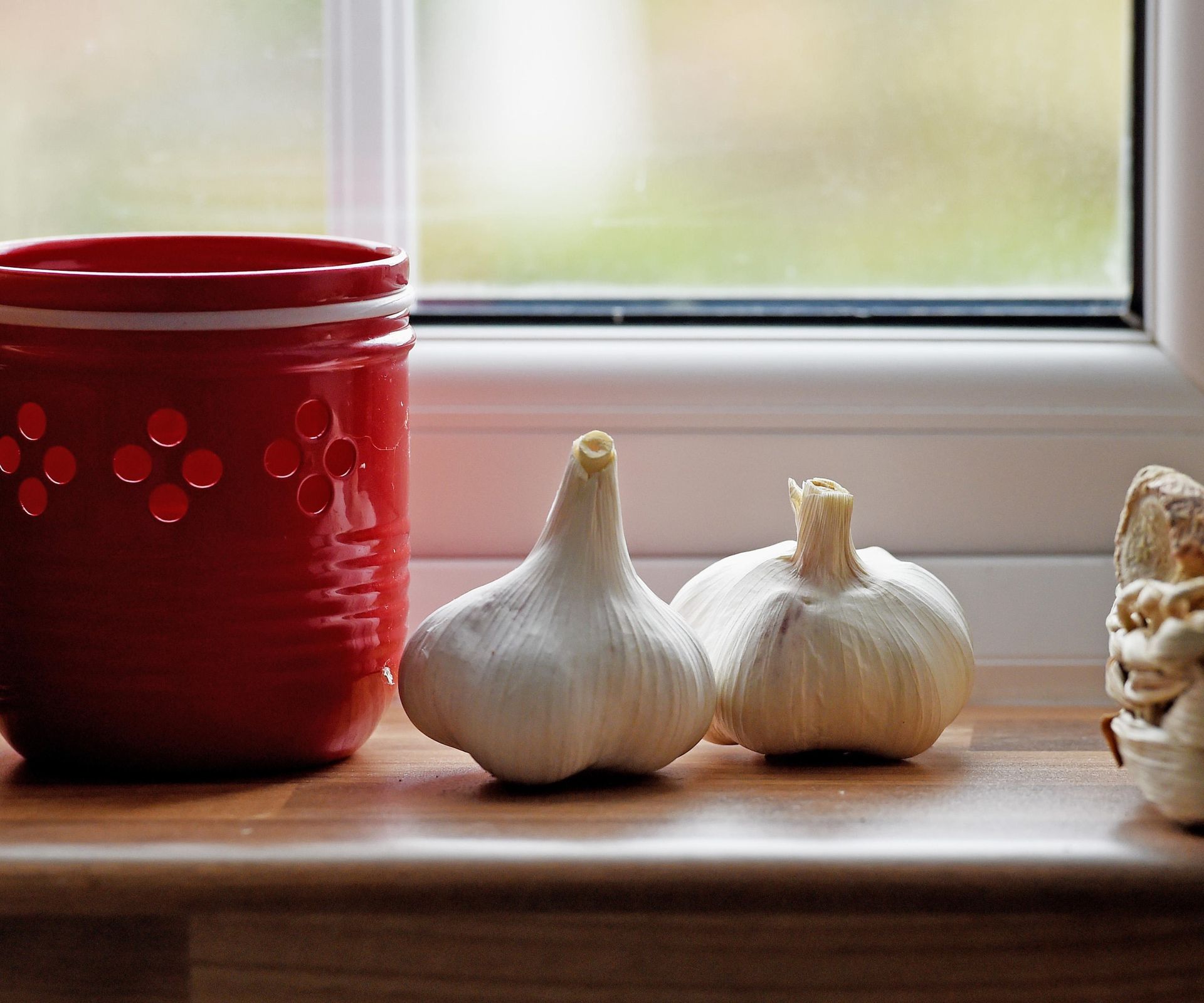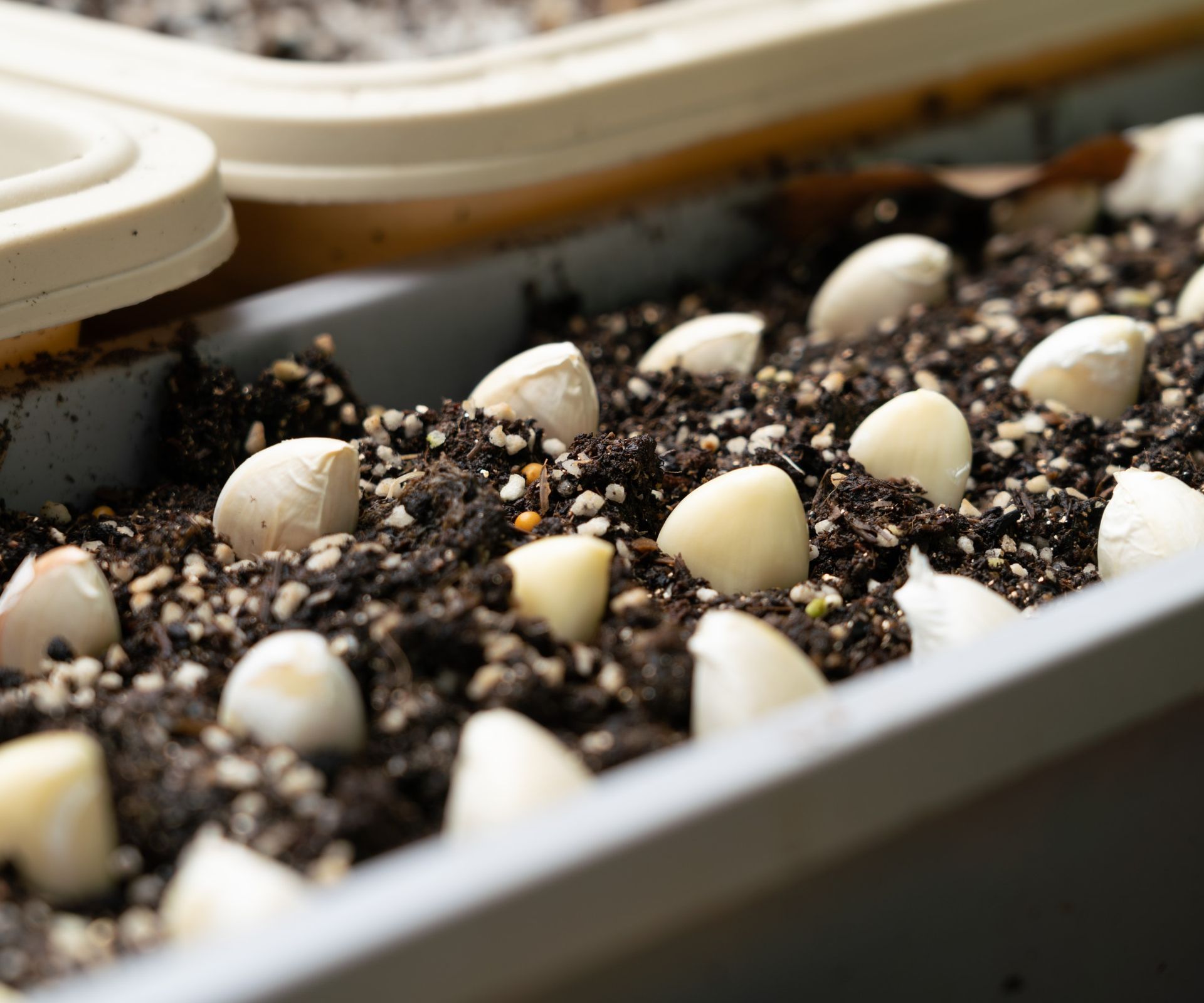How to grow garlic indoors – get a harvest of garlic greens and bulbs on a windowsill
Discover how it is possible to get a flavorful and speedy harvest of garlic indoors on a window ledge
- (opens in new tab)
- (opens in new tab)
- (opens in new tab)
- Sign up to our newsletter Newsletter


Garlic can be grown successfully indoors, either as a fast-growing crop for flavorful garlic greens or allowed to develop into full bulbs. It makes it possible for people to enjoy homegrown garlic even if they don't have access to a backyard.
Anyone wondering how to grow garlic indoors needs not worry, as it is possible on a sunny windowsill with only basic equipment required. It can need a bit of monitoring and extra aftercare if it is garlic bulbs you are after, but still well worth the effort to get a fresh harvest for the kitchen.
Learn how to grow garlic and you can reap the rewards of cultivating this crop indoors. If you are considering growing garlic in your home, however, it should be noted that the plant is toxic to dogs and cats.

A south-facing windowsill is ideal for growing garlic indoors

Drew is a former professional kitchen gardener and has worked in several productive gardens growing vegetables for restaurants. Garlic was always a mainstay in the vegetable gardens and he has planted, grown and harvested many varieties over the years.
Where to grow garlic indoors
Garlic requires a good amount of sunlight in order to grow. Ideally it would get at least six hours of direct sunlight each day if being grown for a bulb, but closer to four is acceptable for growing garlic greens. A sunny window ledge can be an ideal spot.
Julia Omelchenko, resident botany expert at NatureID (opens in new tab), describes proper lighting as ‘the most important growing condition’ when it comes to garlic.
‘Leaving the planters on a south-facing windowsill is a good idea,' she says. ‘Make sure, however, that the lighting is bright but diffused. Use a grow lamp if there isn’t enough light inside.’ A basic LED grow lamp, such as this one from Amazon (opens in new tab), can typically cost $20 to $30.
Speaking on the best temperature, Julia adds the ‘optimal’ range for growing garlic indoors is 64-73˚F. Care should be taken to avoid very humid conditions and very cold temperatures, so avoid having them near radiators or air conditioning.

Garlic cloves are separated from the bulb and planted pointy-end up
How to grow garlic greens indoors
Garlic greens is the term used to describe the leaves and tops of sprouting bulbs. They are lighter in flavor than traditional garlic and are used as a garnish or seasoning, or substituted for scallions or leeks in recipes. Garlic greens are simple to grow indoors on a windowsill and can be ready for the first harvest of delicious green stalks in as little as a couple of weeks.
- Choose a pot at least six inches deep and with good drainage holes in the bottom.
- Fill the container with well-draining soil and push the cloves pointy-end up into holes in the soil two to three inches deep.
- You can plant cloves closer together than you can growing garlic outdoors, just make sure they do not touch. Give each clove around two inches of space.
- Place the container on a sunny window-ledge so it can get at least four hours of direct sunlight a day. Indoor grow lights can be used to supplement extra light.
Melvin Cubian, in-house expert for PlantIn (opens in new tab), recommends staggering the planting of cloves to give yourself prolonged access to the aromatic pointy leaves he describes as ‘perfect’ for garnishing dishes.
He says: ‘Planting garlic cloves indoors by batch with 1-2 week gaps lets you gather a continuous supply of fresh garlic leaves.’

Cloves can be planted close when growing garlic greens indoors
How to grow garlic bulbs indoors
If you want to grow hardneck varieties of garlic, they will need a period of chilling in a cold location prior to planting. Hardneck garlic needs at least 40 days at or below 40˚F to ensure the bulb splits into many cloves. This period of cold weather exposure is not necessary for softneck varieties.
Garlic produces large roots so, when you want to grow garlic in pots, the container needs to be deep – a minimum of six inches is recommended. Wide planters with good drainage holes are ideal for growing garlic indoors. For a good harvest you require several bulbs and wide planters allow enough space for multiple cloves to develop. Fill the container with an all-purpose soil and consider mixing a few handfuls of garden compost or well-rotted manure into the potting medium.
Julia from NatureID (opens in new tab)advises: ‘Plant each clove at least 3 inches apart into slightly moistened soil. Press them with the pointed side up about half way in. Planting any deeper than that isn’t recommended, as it may compact the substrate too much, interfering with proper aeration and water evaporation.’
When it comes to when to water the plants, you want the soil to be moist, but not wet and definitely not waterlogged. Excess watering can risk the bulb rotting in the soil. It is recommended to check the moisture levels of the pot by touch, such as putting your fingers into the soil.
Julia recommends you water garlic ‘whenever the topsoil dries off by 0.4-0.8 inches’. Another option is to lift the pot to feel the weight. If the container feels very light, it will be short of moisture.
It will be time to harvest garlic when the leaves turn yellow or brown. If the plant looks like it wants to flower, then cut off the stem as flowering will negatively affect the bulbs produced.

Garlic bulbs take up to eight months to grow
Is it better to grow hardneck or softneck garlic indoors?
When you see garlic bulbs for sale to grow they will be described as either hardneck or softneck. There are certain differentiations to consider when choosing between growing hardneck or softneck garlic indoors. The two categories differ in terms of climatic conditions, bulb formation, flavor, and whether they put out garlic scapes.
When considering growing garlic indoors, softneck garlic is better suited as it does not require the long chilling period that hardneck varieties do. Softneck garlic is also more suited to mild climates, matures quicker than hardneck garlic, and gives you more cloves – though smaller than hardneck varieties.
Hardneck and softneck garlic bulbs are still readily available to buy at Amazon (opens in new tab), Nature Hills (opens in new tab), and Burpee (opens in new tab)

Pots must be deep and have good drainage holes in the bottom
How long does it take to grow garlic indoors?
Garlic has a long growing season and it can take up to eight months to go from planting the clove to harvesting the fully-grown garlic bulb. When growing in pots, it can mean lots of monitoring and watering is required throughout this extended period to maturity. The best methods of how to store garlic can help ensure any homegrown cloves can be kept and enjoyed for the longest time possible.
While growing a bulb is a long process, growing garlic greens indoors offers a much quicker alternative. Rather than many months, it can take a matter of weeks to enjoy delicious garlic greens. It is a crop that takes from three to five weeks to go from planting the clove to getting the first harvest of greens.

Drew’s passion for gardening started with growing vegetables and salad in raised beds in a small urban terrace garden. He has gone on to work as a professional gardener in historic gardens across the UK and also specialise as a kitchen gardener growing vegetables, fruit, herbs, and cut flowers. That passion for growing extends to being an allotmenteer, garden blogger, and producing how-to gardening guides for websites.
-
-
 Robert Pattinson just bought a Spanish Colonial-style home – with an interior designer past
Robert Pattinson just bought a Spanish Colonial-style home – with an interior designer past'The Batman's' Robert Pattinson and Suki Waterhouse purchased the Jeff Lewis-designed Hollywood Hills estate for $5.3 million
By Megan Slack • Published
-
 7 expert-approved methods to remove candle wax from carpet
7 expert-approved methods to remove candle wax from carpetCleaning professionals share their tips on how to remove candle wax from carpet
By Millie Hurst • Published

